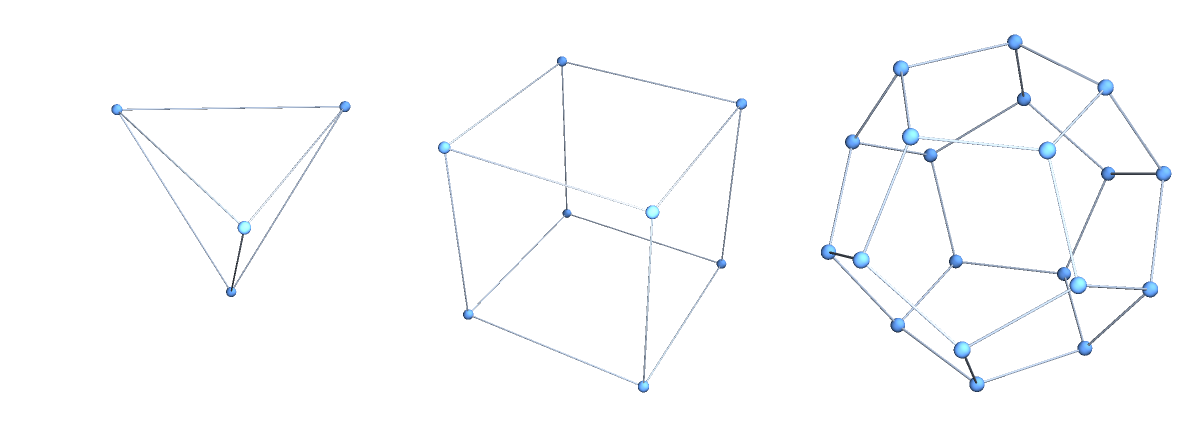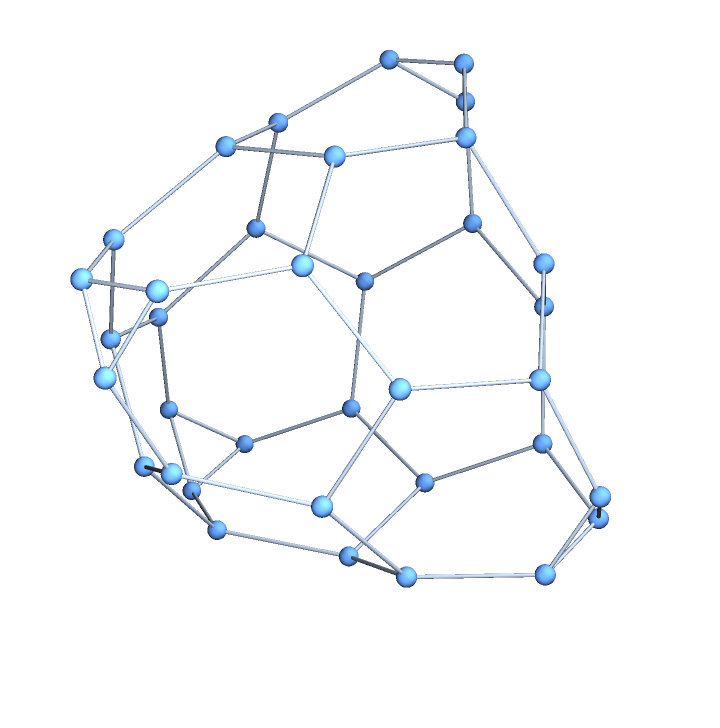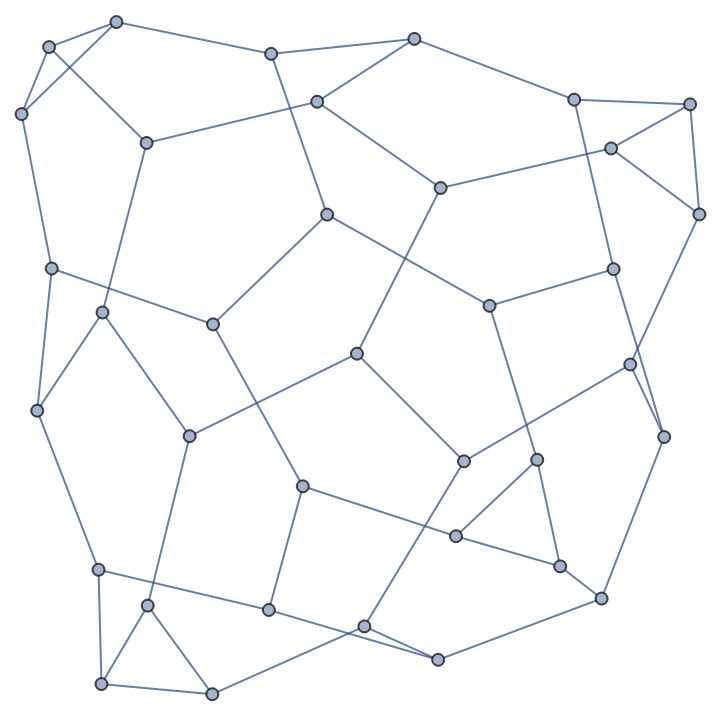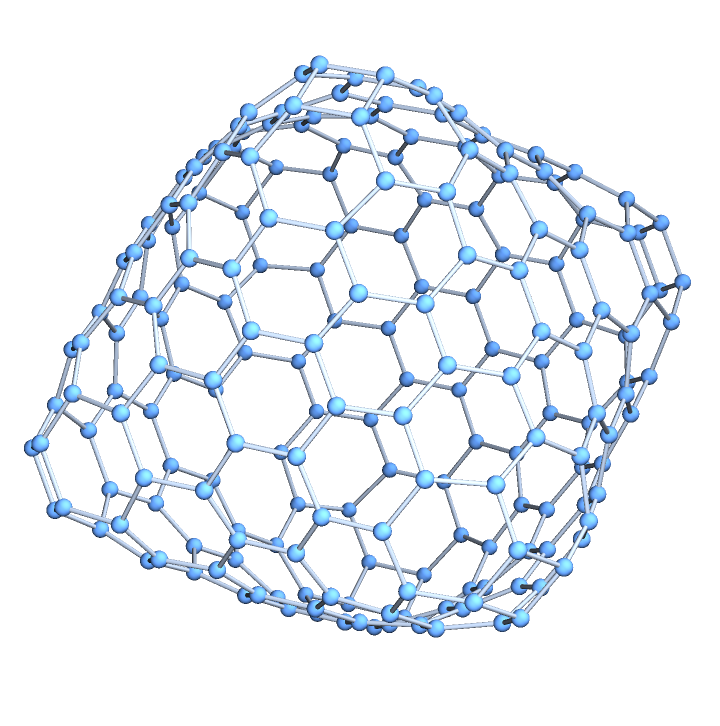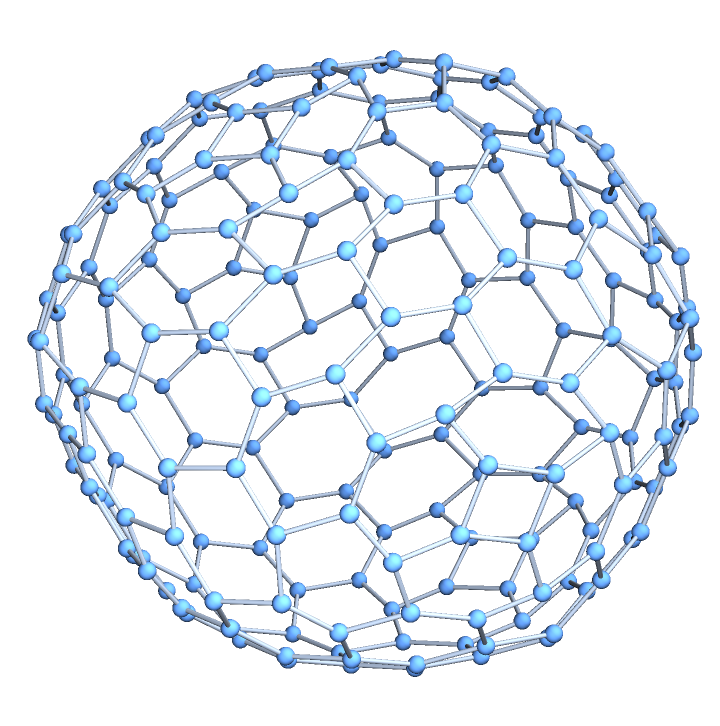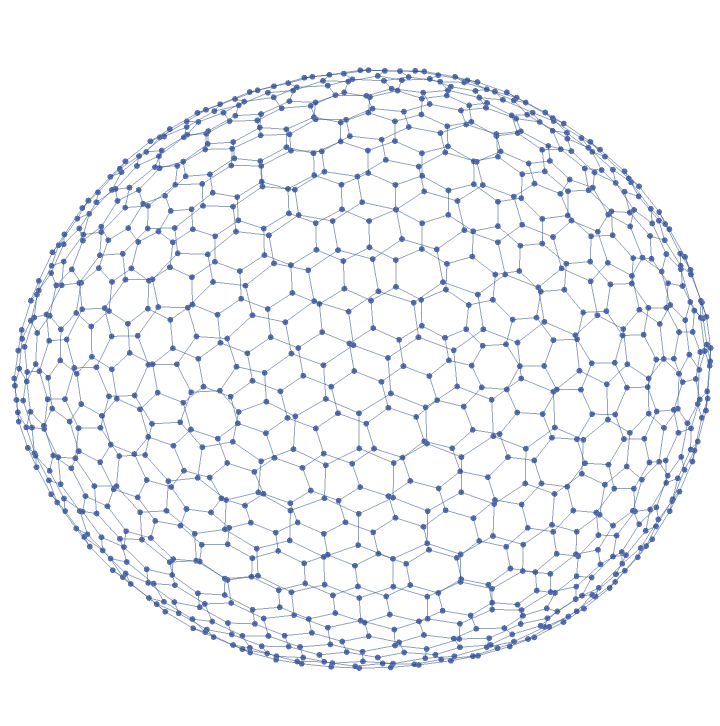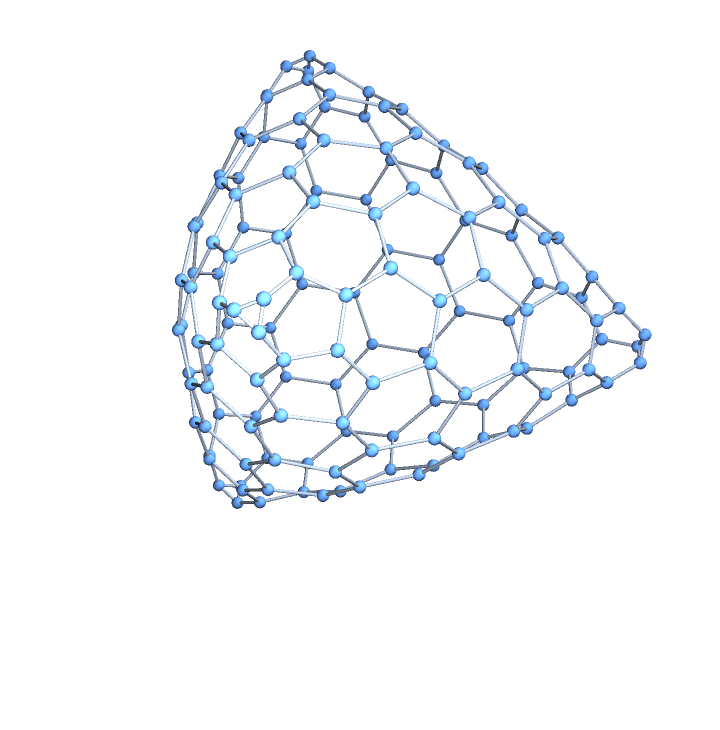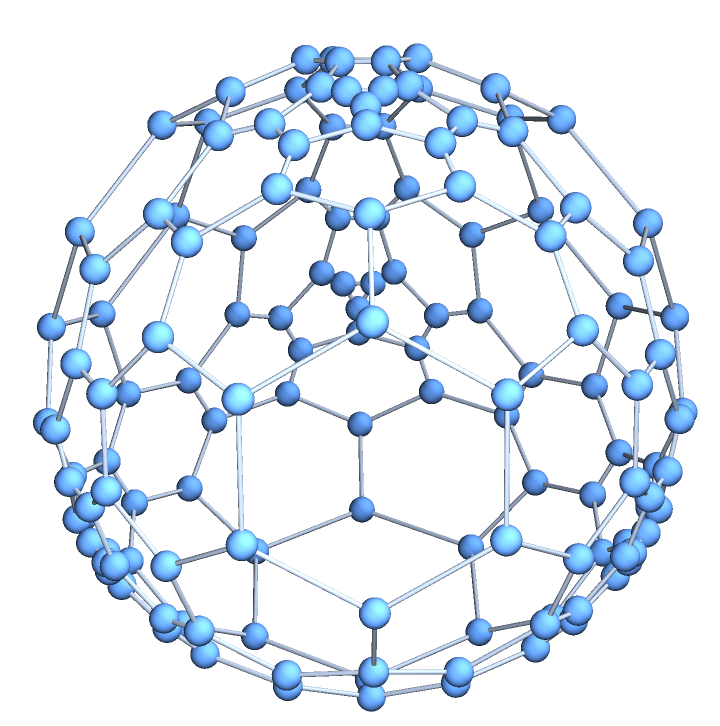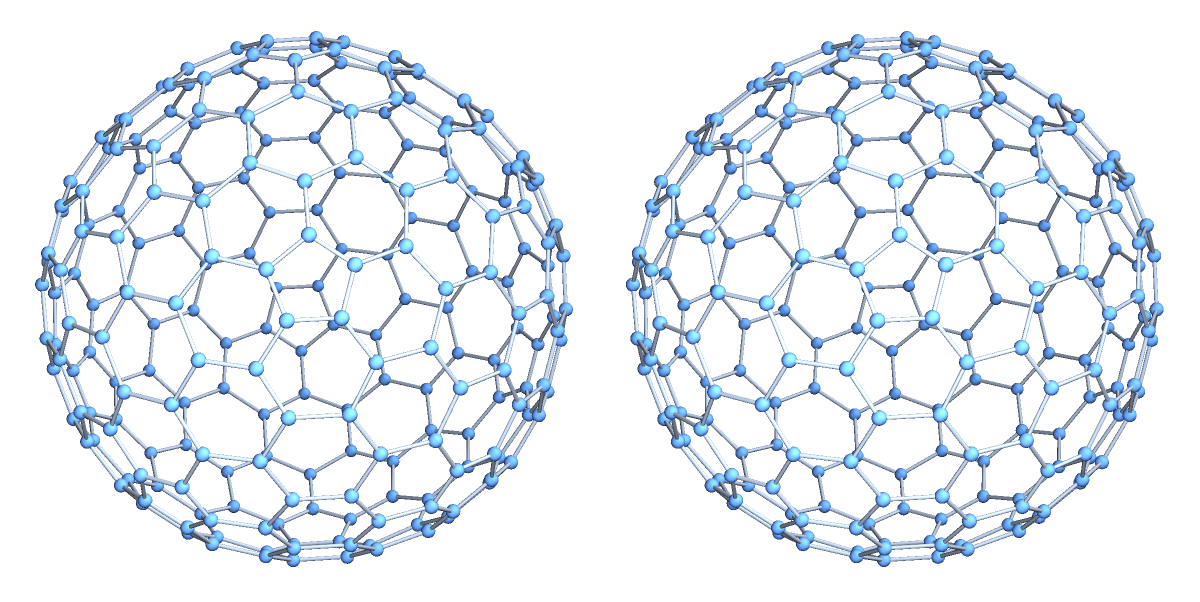Details and Options
Possible values of base are "Tetrahedron", "Octahedron" or "Icosahedron".
Possible values of class include "I", "II", 1 and 2.
ResourceFunction["GoldbergGraph"][base,n] is equivalent to ResourceFunction["GoldbergGraph"][base,2,n].
ResourceFunction["GoldbergGraph"][base,1,n] or ResourceFunction["GoldbergGraph"][base,"I",n] generates a three-dimensional graph corresponding to the class I (n+1,0) Goldberg polyhedron, the dual polyhedron of a geodesic sphere.
ResourceFunction["GoldbergGraph"][base,2,n] or ResourceFunction["GoldbergGraph"][base,"II",n] generates a three-dimensional graph corresponding to the class II (n,n) Goldberg polyhedron.
ResourceFunction["GoldbergGraph"] takes the same options as
Graph3D.
With the setting
VertexCoordinates→"Embedded", coordinates corresponding to the vertices of the Goldberg graph are generated with a special method.
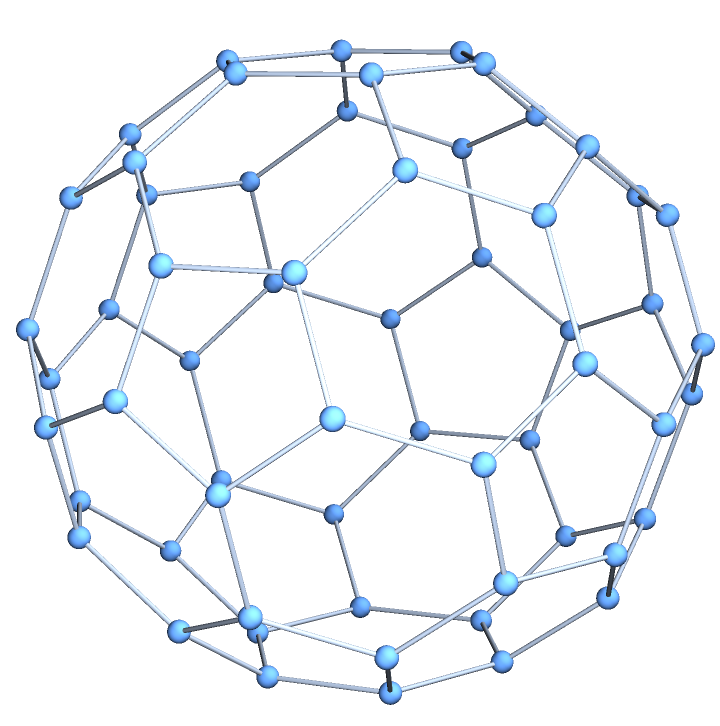
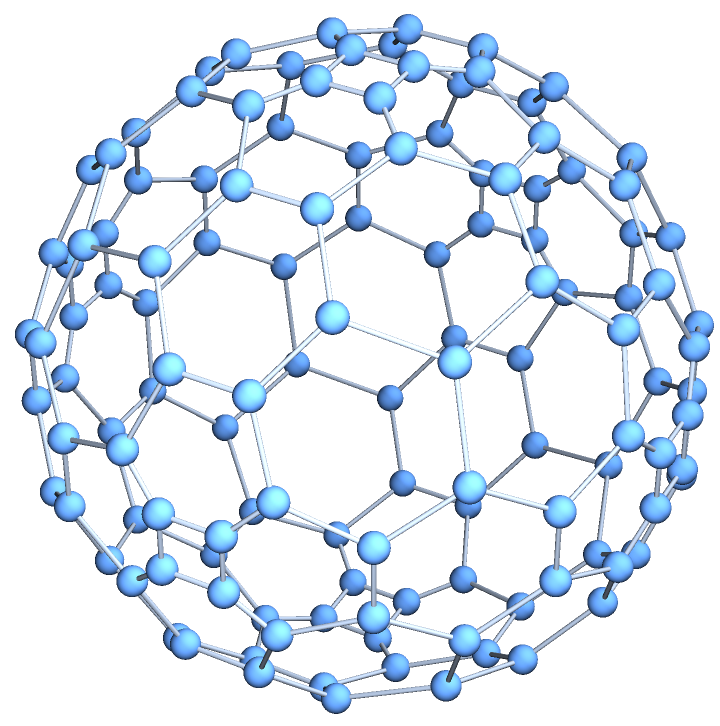
![Table[ResourceFunction["GoldbergGraph"][p, 0, VertexCoordinates -> "Embedded"], {p, {"Tetrahedron", "Octahedron",
"Icosahedron"}}] // GraphicsRow](https://www.wolframcloud.com/obj/resourcesystem/images/e3e/e3ef3eef-2ee3-4942-b2fa-ee6483c374a5/77945603518428f6.png)
